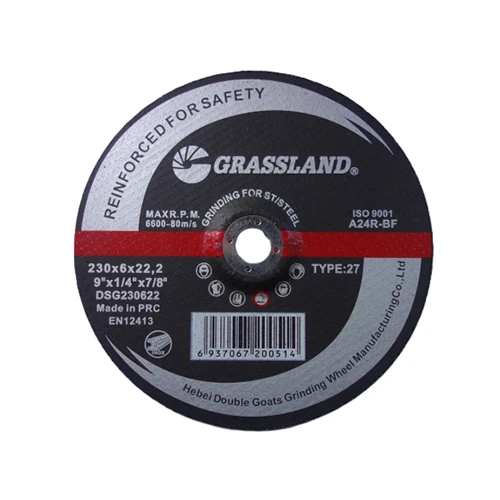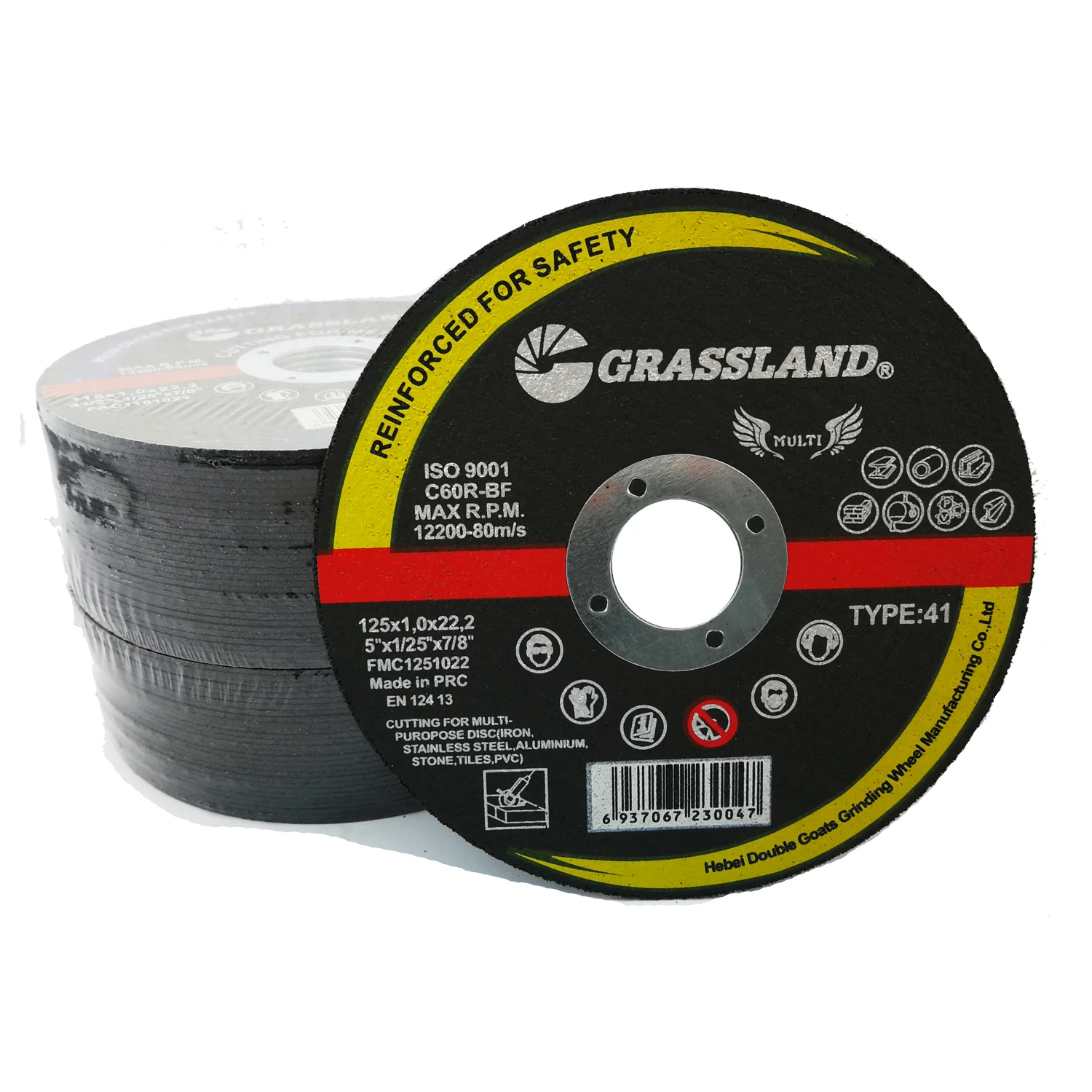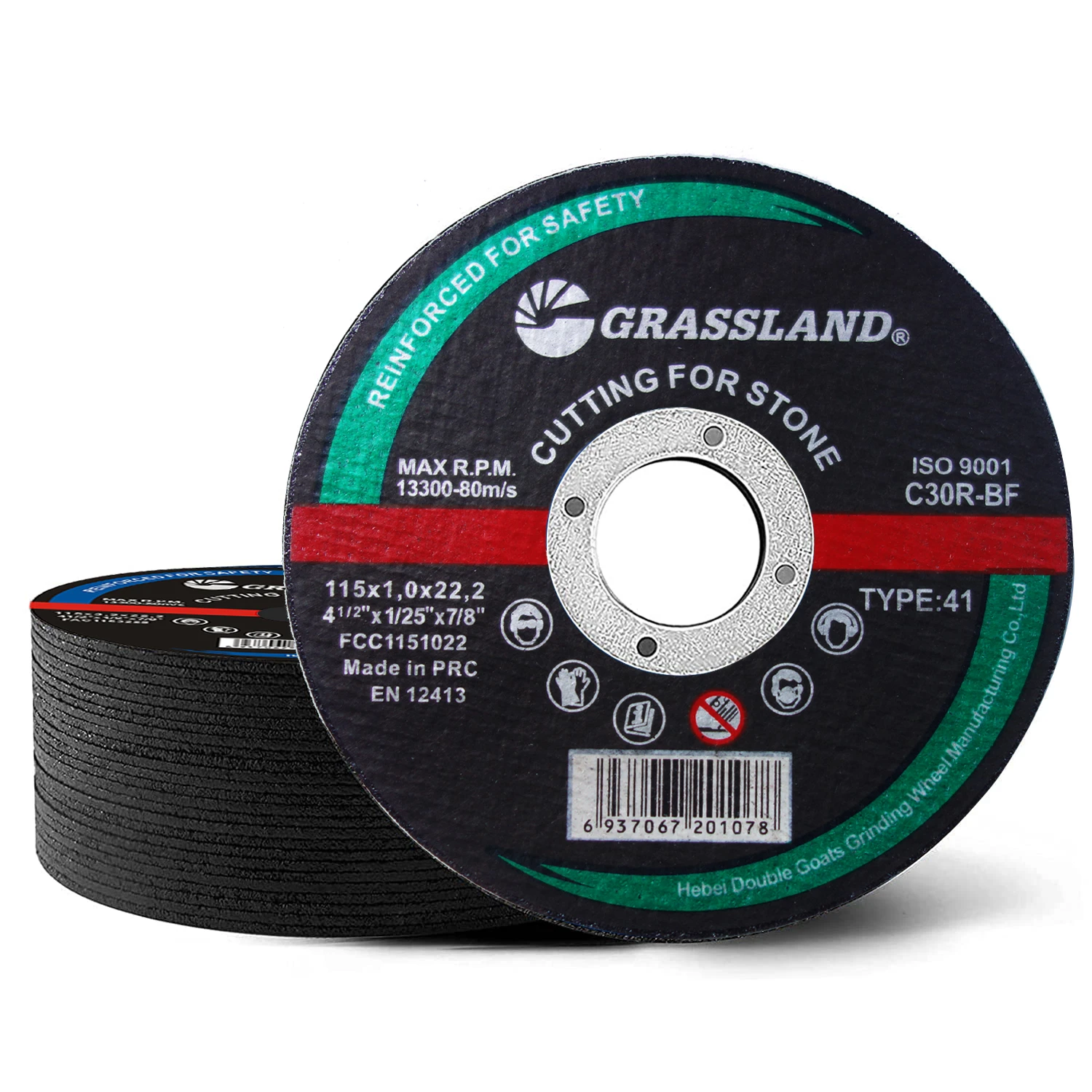9 inch angle grinder discs: field notes from the shop floor
I’ve spent a fair bit of time loitering in fabrication bays (with permission, to be clear), and one thing’s constant: when productivity dips, it’s often the wheel, not the worker. That’s why the 230 mm class—what most of us simply call 9 inch angle grinder discs—matters so much. This particular model, 230mm x 6 x 22.2mm, 3 fiberglass nets, Type 27, comes from No.88 Economic and Technological Development Zone Shucheng, Hejian, Hebei, P.R. China. Factory setting, serious volume, surprisingly nimble on OEM requests.

What’s trending in big-diameter grinding
Two big shifts, to be honest: more reinforcement (triple-net is now baseline in heavy fab), and tighter controls on burst speed and balance. Many customers say they’re also switching to hybrid alumina/zirconia blends for tougher steels. And yes, there’s a push toward EN 12413 labeling transparency—operators want to see the max RPM, not guess it.
Product snapshot: 9 Inch Angle Grinder Discs 230mm X 6 X 22.2mm 3 Nets T27
| Diameter × Thickness × Bore | 230 × 6 × 22.2 mm (≈ 9" × 1/4" × 7/8") |
| Type | T27 (depressed center) |
| Reinforcement | 3 fiberglass nets (≈ high impact resistance) |
| Abrasive / Bond | Aluminum oxide (AO) or AO/Zirconia blend; resin bond |
| Grit / Hardness | 24–30; R–S (around, real‑world use may vary) |
| Max RPM | 6,600–6,650 RPM typical for 230 mm (see label) |
| Compliance | EN 12413; ANSI B7.1; MPA-tested (where applicable) |
| Applications | Heavy stock removal, beveling, weld grinding (carbon steel, cast iron; Inox options) |
How they’re made (short version)
Materials: fused AO or AO/Zr grains; phenolic resin; 3-layer fiberglass mesh.
Method: cold-press/hot-press molding → precise curing → side labeling → balancing.
Testing: ring test, dimensional check, burst test per EN 12413/ANSI B7.1; sample MPA audit.
Service life: ≈ 25–40 minutes of aggressive grinding per disc on mild steel at 6,000–6,500 RPM (operator technique matters).
Field performance and test notes
In a shop trial on Q235 plate (admittedly a bit rough-and-ready), this T27 6 mm wheel removed ≈ 1.4 kg metal/disc versus ≈ 1.25 kg for a mid-market baseline—about 12% uplift. Vibration was low enough that the line foreman didn’t complain—always a good sign.
Where they earn their keep
- Shipyards and heavy fab: weld prep and root pass cleanup.
- Construction steel: beveling H-beams, plate edge dressing.
- Pipeline yards: girth weld grinding; spatter removal.
- Maintenance: mill scale removal on structural members.
Vendor comparison (real-world buyer notes)
| Vendor | Reinforcement | Max RPM | Typical Price | Lead Time | Certs (≈) |
|---|---|---|---|---|---|
| Factory (Hebei) | 3 nets | ≈ 6,600 | Value-tier | 12–20 days | EN 12413, ISO 9001, MPA (select lines) |
| Brand A | 2–3 nets | ≈ 6,650 | Mid-tier | In stock | EN 12413, oSa |
| Brand B | 3 nets | ≈ 6,650 | Premium | 7–10 days | EN 12413, MPA, ISO 14001 |
Customization and QA
OEM label, grit tuning (24 for hogging, 30 for control), Inox sulfur/chlorine-free spec, and color-coded resin are all doable. QC-wise, look for batch burst-test logs and traceable LOT IDs. If a supplier won’t share RPM/burst data, I’d walk.
Mini case study
A Southeast Asian ship repair yard swapped to 9 inch angle grinder discs with triple nets and AO/Zr blend; reported a 9–11% reduction in wheel changes per shift, mostly due to fewer edge fractures and slightly cooler cutting. Not a lab miracle—just steady gains.
Safety reminder: match wheel size and RPM to your grinder, use guards and PPE, and ring-test before mounting. It seems basic, but it prevents the ugly stuff.
Authoritative references
- EN 12413: Safety requirements for bonded abrasive products — CEN. https://standards.cen.eu
- ANSI B7.1: Safety Requirements for the Use, Care and Protection of Abrasive Wheels — ANSI. https://webstore.ansi.org
- oSa: Organization for the Safety of Abrasives. https://www.osa-abrasives.org
- MPA Hannover: Testing and certification for abrasive tools. https://www.mpa-hannover.de
- OSHA Abrasive Wheel Machinery (29 CFR 1910.215). https://www.osha.gov/laws-regs/regulations/standardnumber/1910/1910.215
Post time:Oct - 07 - 2025

















